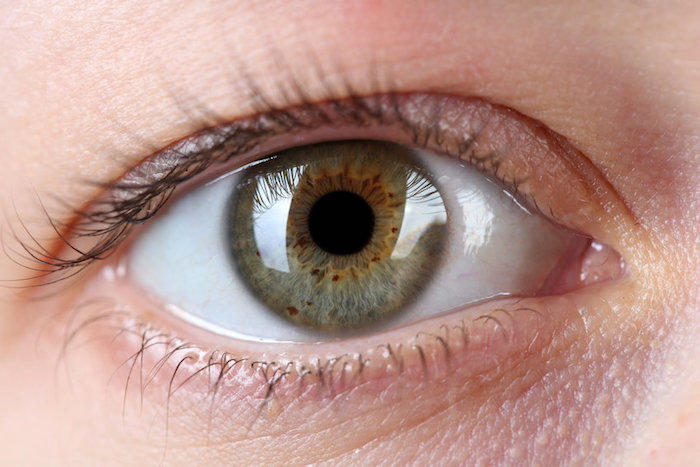 In a study well-timed for summer, vision scientists have found that eye freckles, dark spots on the colored part of the eye (iris), are more frequently found in people with higher lifetime exposure to sunlight.
In a study well-timed for summer, vision scientists have found that eye freckles, dark spots on the colored part of the eye (iris), are more frequently found in people with higher lifetime exposure to sunlight.
While not malignant, eye freckles could indicate the presence or risk of sunlight-triggered eye diseases like cataract or macular degeneration.
The study, Iris Freckles a Potential Biomarker for Chronic Sun Damage, was published in the journal Investigative Ophthalmology & Visual Science. Over 600 swimmers at public pools in Styria, Austria had their eyes examined for freckles and filled out a questionnaire that asked about their lifetime sun exposure and sun-protection habits.
The researchers found that the development of eye freckles correlated with increasing age, lifetime number of sunburns and a history of severe sunburns resulting in blisters. The results also showed that people with dark colored eyes were less likely to have eye freckles, as well as those who maintained better sun protection habits like using sunscreen or covering up.
One unexpected finding was the uneven positioning of freckles on the eye. Freckles were most commonly found in the lower outer quadrant (away from the nose) of each eye. The researchers hypothesized this may be because the eyebrow and nose shield the upper and inner quadrants of the eye from the sun, lowering exposure and the risk of developing freckles.
“While we do not know the exact role of sunlight in several eye diseases, we now have a biomarker (iris freckles) indicating high amounts of chronic sunlight exposure,” says author Christoph Schwab, MD, ophthalmologist at the Medical University of Graz, Austria.
Source: Christoph Schwab, Christoph Mayer, Iris Zalaudek, Regina Riedl, Markus Richtig, Werner Wackernagel, Rainer Hofmann-Wellenhof, Georg Richtig, Gerald Langmann, Lisa Tarmann, Andreas Wedrich, Erika Richtig. Iris Freckles a Potential Biomarker for Chronic Sun Damage. Investigative Opthalmology & Visual Science, 2017; 58 (6): BIO174 DOI: 10.1167/iovs.17-21751











